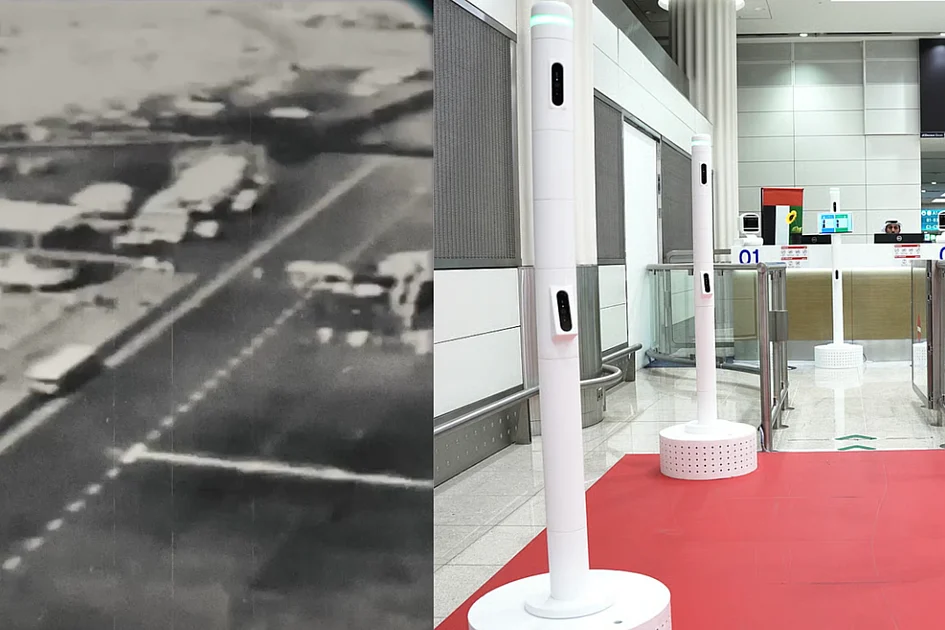Introduction to Dubai International Airport
The most busy airport in the world began its trip 65 years ago with a small terminal, a modest sandway, and sky-high ambitions. It officially opened its doors on September 30, 1960. A large building took place in the coming years to combine UAE travelers with international goals.
Development Over the Years
The development did not stop in 2025 – Dubai International Airport (DXB) recently presented an intelligent corridor at Terminal 3, which gave up the days of long immigration lines. With the AI-attached system "Red Carpet", up to 10 travelers can stop immigration in seconds without pass scans, document controls, or physically being present at the time.
History of Dubai International Airport
On the 65th anniversary of the huge aviation hub, the chairman of Dubai Airports gave a rare insight into the first days of DXB. From an airport that was only able to take over aircraft to the size of DC-3 to over 92 international airlines, the airport has grown suddenly.
Timeline of Development
Here is a timeline of how the aviation giant has developed in more than six decades:
- 1959: The work began to establish the airport on a wasteland, which was about four kilometers from the outskirts at the time.
- 1960: In one year after the start of the construction, the airport was opened with a sandway with sand compact and a single terminal.
- 1963: The Emirate started working on an asphalt landing railway and opened it together with other upgrades within two years.
- 1969: In less than a decade after its opening, the airport already served nine airlines that were connected to up to 20 destinations.
- 1970: Ten years later, a new three-story terminal building, a new control tower, additional roller paths, airfield lighting, and landing instruments were added.
- 1983: Almost synonymous for Dubai Airport, this year was the year when Dubai Duty Free began with its business for the first time with a turnover of 20 million US dollars.
- 1984: The second runway was opened in April with a classification of the II category.
- 1985: The UAE flag bearer, Emirates, was started.
- 1998: Terminal 2 was opened, and the capacity of DXB was increased by up to 2 million passengers per year.
- 2000: Forty years in Concourse 1 (now Concourse C) opened. It marks a turning point in the history of the airport and was built as part of the first phase of the general expansion project at a price of 2 billion.
- 2008: Terminal 3 was opened for the exclusive use of Emirates Airline, and the capacity of the airport was expanded to a whopping 30 million passengers.
- 2009: DXB became the fastest-growing airport in the world among the top 50 hubs and crossed the 40 million passenger brand. The year was also the start of the sister airline of Emirates, Flydubai.
- 2013: Concourse A, the world’s largest interior design for the A380.
- 2014: DXB began its legacy to be number 1 worldwide for international passenger traffic.
- 2016: $1.2 billion, operated by Terminal 1, and opened more than 60 international airlines.
- 2018: DXB welcomed its billionth passenger.
- 2020: Since the world was hit by the fatal Covid-19 pandemic, DXB remained resilient. After a short closure, it became one of the first major hubs worldwide to reopen on July 7th after it had partially exposed the operations on March 25.
- 2023: The most important aviation hub remained committed to inclusiveness and offered travelers with different needs a seamless experience. The efforts of the airport were recognized with an accreditation of the Airport Council International (ACI) as part of the accreditation of the Accority Enhancement Accreditation.
- 2025: The airport contained an intelligent corridor, so that passengers can complete immigration in seconds without travel documents. DXB is still the most busy airport in the world for the 11th year in a row.

